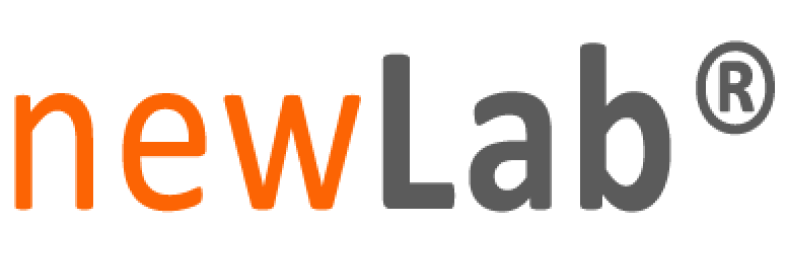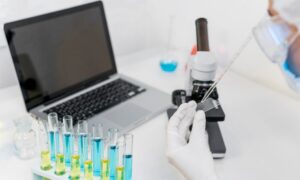Managing scientific equipment in Research and Development (R&D) within a large, global pharmaceutical company is a complex and multifaceted task. The equipment used in drug discovery, development, and testing plays a critical role in advancing research, ensuring product quality, and meeting regulatory standards. However, managing such sophisticated instruments across multiple locations and research areas presents significant challenges that require careful coordination, resource management, and compliance adherence. Here are some of the key challenges faced by pharmaceutical companies when managing their scientific equipment:
1. Inventory Management and Equipment Tracking
In a global pharmaceutical organization, there can be hundreds or even thousands of pieces of scientific equipment spread across various R&D departments and geographical locations. Keeping track of these assets—whether it’s high-end mass spectrometers, automated pipetting systems, or specialized imaging devices—can be daunting.
- Asset visibility: Ensuring real-time visibility of the equipment’s location, availability, and status is a significant challenge, especially when equipment moves between laboratories or regions.
- Lifecycle tracking: Managing the lifecycle of each piece of equipment from purchase to decommissioning is crucial. This includes tracking maintenance schedules, upgrades, repairs, calibration, and replacements, which can be particularly challenging in a large, distributed organization.
- Loss and misplacement: The risk of losing or misplacing expensive equipment is heightened in global organizations where researchers may share equipment across departments or locations. Inventory management systems must be robust enough to handle these logistical challenges.
2. Maintenance and Calibration
Regular maintenance and calibration of scientific equipment are critical to ensuring accuracy, reliability, and compliance with regulatory standards. However, managing maintenance and calibration schedules across multiple global sites presents significant operational challenges.
- Standardization: Ensuring that equipment is maintained and calibrated consistently across all global sites according to standardized procedures is vital, especially when equipment is being used in critical R&D tasks, such as clinical trials or drug testing.
- Downtime and disruptions: Delays in scheduled maintenance or unplanned breakdowns can lead to downtime, disrupt experiments, and ultimately delay the entire research process. The global nature of operations means that coordinating these schedules across time zones can be difficult.
- Vendor management: Large pharma companies often rely on third-party vendors for maintenance and calibration services. Coordinating these services across multiple countries, ensuring timely responses, and managing contracts with external service providers can be a logistical headache.
3. Compliance and Regulatory Requirements
Pharmaceutical companies operate under stringent regulatory frameworks, including those set by the FDA, EMA, and other global health authorities. These regulations mandate that equipment used in R&D and manufacturing must meet certain standards of performance, safety, and traceability.
- Regulatory documentation: Equipment used in R&D must be properly documented to ensure that it complies with Good Laboratory Practice (GLP), Good Manufacturing Practice (GMP), and other applicable guidelines. This includes maintaining calibration records, performance validation reports, and logs of repairs or adjustments.
- Audit readiness: Equipment must be audit-ready at all times, meaning that the company must be prepared for inspections and audits by regulatory bodies. Ensuring the accurate and timely documentation of maintenance, calibration, and operational data is an ongoing challenge.
- Global consistency: Different countries may have slightly different regulatory requirements. A challenge arises in ensuring that all sites, regardless of location, meet the local regulations while also adhering to the global standards set by the parent company.
4. Cost Management and Budgeting
Scientific equipment, especially in the pharmaceutical industry, can be extremely expensive. Managing the costs associated with procurement, maintenance, calibration, repairs, and training is a constant challenge.
- Capital expenditures: Purchasing new equipment, especially cutting-edge instruments used in advanced research, can require significant capital investment. Deciding on which equipment to purchase, justifying the investment, and aligning purchases with long-term R&D strategies can be difficult in a large organization.
- Operating costs: In addition to initial costs, ongoing operational expenses—such as consumables, parts replacement, service contracts, and power usage—can add up quickly. Managing these costs and ensuring that equipment usage is optimized to avoid wastage or inefficiency is a constant balancing act.
- Cost allocation across departments: In global pharma companies, different R&D departments or research teams often need to share equipment, leading to disputes over costs or usage time. Developing transparent and equitable cost allocation strategies is crucial for ensuring smooth operations and preventing conflicts.
5. Data Management and Integration
Scientific equipment in R&D generates massive amounts of data, which must be carefully stored, analyzed, and shared across the organization. Managing the flow of this data and ensuring its integrity and accessibility is a significant challenge.
- Data storage: Given the volume of data produced by instruments like high-throughput screening machines or genomic sequencers, ensuring that data is stored securely and remains accessible for future analysis can be a challenge. Compliance with data protection regulations (e.g., GDPR, HIPAA) adds another layer of complexity.
- Integration across systems: Different R&D departments may use different types of equipment that produce data in various formats. Integrating these disparate data sources into a centralized system, where they can be analyzed and interpreted, requires robust software platforms and seamless IT infrastructure.
- Data integrity and security: Scientific data must be protected against tampering, loss, or unauthorized access, especially in the context of clinical trials or regulatory submissions. Ensuring the integrity and security of research data is paramount and can be challenging to manage across multiple sites and regions.
6. Training and User Support
Scientific equipment used in pharmaceutical R&D is often highly specialized and requires specific expertise to operate effectively. Ensuring that staff across multiple sites are properly trained and supported can be difficult, especially in a global organization.
- Training consistency: Training programs must be standardized across all locations to ensure that researchers are adequately skilled to use the equipment safely and effectively. This is especially important for complex machinery that can yield inaccurate results or cause safety risks if misused.
- Ongoing support: In large pharma companies, equipment may be used by staff with varying levels of technical expertise. Providing continuous support and troubleshooting across different time zones can be challenging without a centralized, well-structured helpdesk or technical support system.
- New technologies and updates: As new technologies and equipment are adopted, continuous training is required to ensure that all employees are up-to-date on the latest advances in scientific equipment. This is particularly important in the pharmaceutical industry, where cutting-edge technologies like CRISPR gene editing or AI-driven drug discovery are rapidly evolving.
7. Managing Equipment Utilization Across Multiple Sites
In a global pharmaceutical company, R&D may occur at multiple research sites, each with its own set of equipment and requirements. Ensuring that equipment is optimally utilized and that each site has access to the resources it needs is a constant challenge.
- Overlapping use and duplication: Different departments or teams at different sites may have similar equipment, leading to potential underutilization or unnecessary duplication. Sharing equipment across sites or departments can improve efficiency, but it requires effective coordination and scheduling.
- Logistical challenges: Transporting equipment or parts between global sites can be logistically difficult and expensive. International shipping, customs, and regulatory requirements must be taken into account, and the equipment may be subjected to handling conditions that affect its performance.
- Standardization across locations: Ensuring that equipment is used consistently across multiple sites and that results are comparable requires standardized operating procedures (SOPs) and calibration across all locations, which can be difficult to enforce globally.
Conclusion
Managing scientific equipment in R&D at a large global pharmaceutical company is an inherently complex and high-stakes challenge. The need to balance cost, compliance, safety, efficiency, and data management requires a well-structured approach, sophisticated systems, and continuous coordination across global teams. Despite the challenges, effective equipment management is critical to advancing scientific discovery, driving innovation, and ensuring the success of the company’s research initiatives. By embracing modern asset management software, establishing rigorous processes, and fostering cross-functional collaboration, companies can mitigate these challenges and maximize the value of their scientific equipment.




